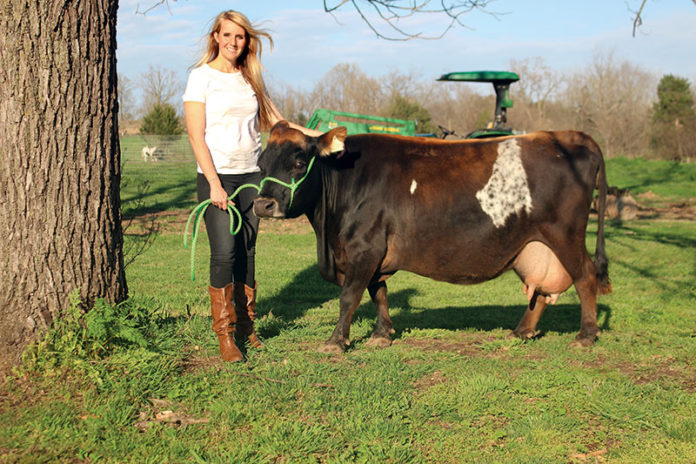Last Updated on February 3, 2024 by Fumipets
Exploring Miniature Cattle: The Perfect Breed for Small Farms
In the vast landscape of agriculture, where space is often a premium and efficiency is key, the concept of miniature cattle breeds has gained significant traction. These pint-sized bovines offer a unique and practical solution for small farms, providing a range of benefits from reduced space requirements to efficient resource utilization.
In this article, we delve into the world of miniature cattle breeds, shedding light on their characteristics, advantages, and suitability for small-scale farming operations.
Miniature Cattle
Aside from their cute looks, miniature cattle breeds serve an important role for small-scale farmers. These bulls and cows are simpler to care for and provide a safer environment for the people who raise them. A little cow can readily feed a household of up to six people. They produce hormone-free, organic milk, which is ideal for families that prefer fresh cow’s milk over goat’s milk. Take a look at these ten tiny cow breeds that are ideal for small farms.
What Is Considered a Miniature Cattle Breed?
Before we go into the numerous types of tiny cows and bulls, it’s important to understand what constitutes a small breed. At three years of age, a small cow breed reaches 48 inches or less. They usually vary in size from 32 to 48 inches. They’re about a third the size of regular cows, which means they only need 2 to 3 acres of grazing pasture.
1. Belted Galloway

The Belted Galloway is one of the world’s oldest cattle breeds. These cows were developed in Scotland because of their hardiness, temperament, and double-layered hair, which allows them to adjust to climatic changes more easily. They come in a variety of colors with a white belt. They are simple to care for, generate excellent milk, and may readily be raised alongside sheep on small farms.
2. Dexter

The Dexter, which originated in Ireland, is nearly half the size of regular Herefords. They are wonderful milk cows since they can produce up to 212 gallons of milk in a single day. The crossbreeding of this breed with others has resulted in a large number of tiny cow breeds. Dexter cows may reach between 600 and 700 pounds when fully grown. Bulls that are mature weigh roughly 1000 pounds.
3. Zebu

These miniature cows have been around since 6,000 B.C. This cow breed, which originated in South Asia, grows slowly yet is disease resistant and resilient. This cow breed, which is considered a tropical breed, requires access to a barn to keep them protected from the elements if they live in cooler climes. When fully grown, cows weigh between 300 and 500 pounds. Bulls may weigh anything from 400 to 600 pounds.
4. Jersey

These little cows are excellent milkers. It may generate up to 3 gallons of milk per day and must be milked twice daily. These cows are friendly, adapt well to hotter climes, and provide milk with a high butterfat level.
5. Panda

Miniature Pandas are a fairly uncommon breed. They feature black ovals around their eyes, as well as a white face and belt. This is where the panda gets its name. Due to its scarcity, this cow breed may easily fetch $30,000 or more.
6. Hereford

This cattle breed is simple to care for since they only consume half of what other cows of similar size do while providing up to 75% of the meat. These cows, weighing 500 to 700 pounds, are bred from the tiniest animals available.
7. Lowline Angus

This gentle breed hails from Australia and is well-suited to meat production. Cows may weigh anything from 650 to 950 pounds. The bulls range in size from 950 to 1350 pounds. They, like the Hereford, are made by breeding the tiniest cattle possible.
8. Texas Longhorn

The Texas Longhorn is a smaller version of the full-sized Longhorn that produces delicious, lean meat. These cows are friendly and simple to care for, thriving in arid climates.
9. Scottish Highland

The Scottish Highland is a historic breed bred for cold weather and living in the highlands. They’re employed in both meat and dairy production. This hardy breed is stocky in form and has a lengthy coat. They are well-suited to live on modest farms in areas where they thrive.
10. Holstein

These little cows are ideal for small farms or households that wish to get their hands on some fresh milk. The Holstein cow was developed in the Netherlands as a milking cow. Its milk is of comparable quality to that of their larger cousins.
Conclusion
These ten cow breeds are appropriate for farmers and households with little grazing space. If you want to raise your own beef or just want fresh milk for yourself and your family, one of these breeds may be the ideal option.
Questions and Answers on Miniature Cattle for Small Farms
What Defines a Miniature Cattle Breed?
Miniature cattle breeds are characterized by their smaller size in comparison to traditional cattle. While specific height and weight standards may vary, these breeds are generally more compact, making them ideal for small farms with limited space.
What Are the Main Advantages of Miniature Cattle for Small Farms?
Miniature cattle bring several advantages to the table. Their smaller size requires less space and resources, making them well-suited for small-scale farming operations. Additionally, their gentle disposition and manageable size make handling and care more accessible for farmers.
Do Miniature Cattle Provide Similar Yields to Traditional Breeds?
Despite their smaller stature, many miniature cattle breeds offer comparable yields in terms of milk, meat, and other by-products. Selective breeding has focused on maintaining productivity while reducing overall size, ensuring that small farms can still benefit from these essential agricultural outputs.
How Does Miniature Cattle Impact Grazing and Pasture Management?
Miniature cattle are generally lighter on their feet, causing less soil compaction and pasture damage compared to larger breeds. This characteristic makes them well-suited for rotational grazing systems, promoting sustainable pasture management on small farms.
What Considerations Should Small-Scale Farmers Keep in Mind When Raising Miniature Cattle?
While miniature cattle offer numerous advantages, prospective farmers should consider factors such as suitable breeds for their specific climate, available resources, and intended use (milk, meat, or dual-purpose). Adequate fencing and shelter are also essential to ensure the well-being of these compact yet hardy animals.


















